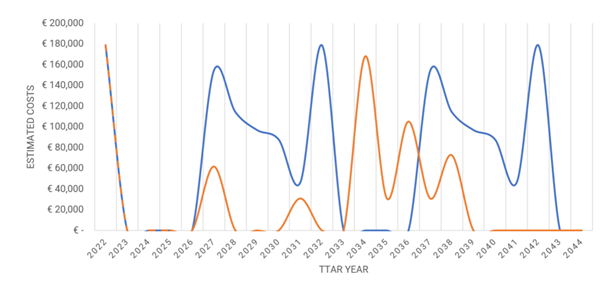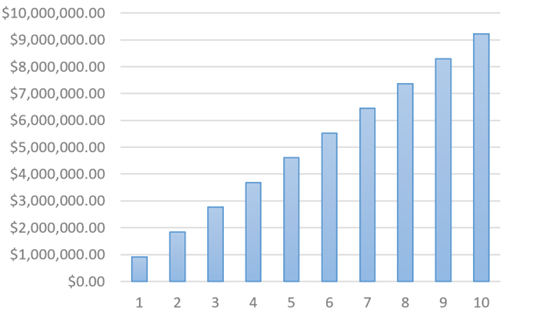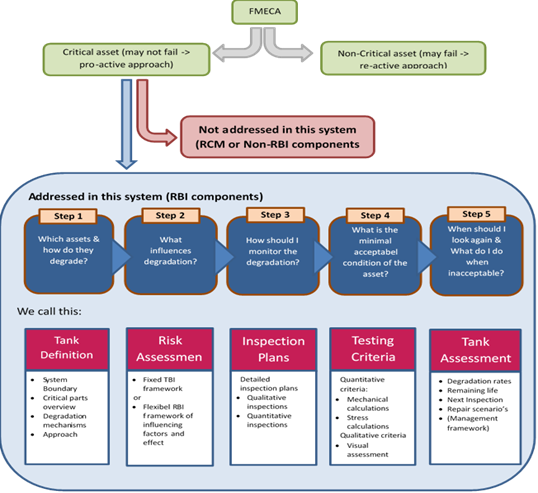Implementing Tank Integrity Management
By Rindert Algra, Joost Roorda
In today’s world with ever tighter maintenance budgets and ever-evolving legislation, it can be a challenge to operate and maintain a tank farm safely and responsibly. In this article we share with you how implementing Tank Integrity Management will help you in handling these challenges.
We start with a short description on the drivers for Tank Integrity Management and from there we will give an overview on how to implement Tank Integrity Management. We use a 5-step model to arrive at a complete implementation.
Drivers
We identify four different drivers for Tank Integrity Management. These are:
Legislative requirements
One of the most important drivers for tank operators to start with Tank Integrity Management is the legislative requirements. The asset owner is responsible for the safe use of its assets and to prevent incidents and minimize environmental damage.
If an incident occurs the asset owner must be able to demonstrate that everything has been done to work safely and to prevent accidents and environmental damage.
Cost control
You want to be in control of your costs. By providing insight into how your assets degrade over time and actively working with it, you gain insight into which maintenance actions should take place and when. This insight supports you in making the right choices to repair your assets in an efficient and cost oriented way. These substantiated actions ensure that you remain in control and that you will prevent unnecessary incidents and downtime.
There are many examples of tank terminals where cost savings are calculated based on longer inspection terms and more focused maintenance. These business cases have two major components:
- Because of higher uptime, tanks have a higher revenue;
- Following longer inspection terms, maintenance and inspection budgets come down.
Based on longer inspection terms, costs for inspection, repairs and taking tanks out of service are more spread out. You can calculate the business case before and after implementation of asset integrity management, based on before and after inspection terms. For the financial costs of maintenance you can typically take 2% of the replacement value of a storage tank as an industry best practice.
A business case for a typical tank terminal is shown below in figure 1. Costs in blue are based on the old maintenance and inspection program and costs in orange are after implementation of Tank Integrity Management.

Cost savings per year for a typical terminal are normally between EUR 100.000,- to EUR 500.000,-, depending on the number and the size of the tanks.
Specifically for terminals renting out tank capacity to third parties, the business case for higher uptime is of interest. Especially of the occupancy degree needs to be high because of inflexibility in tank duties or high commercial demand.
Below in figure 2 is a depiction of a business case for a larger terminal where the tanks are in high demand. On the horizontal axis are the years after implementation and the vertical axis has cost savings for Tank Integrity Management in blue. The availability for this specific large terminal with high capacity tanks, went up by 1.8 percent after implementation of Tank Integrity Management.

Need for maintenance
Another important driver for Tank Integrity Management is that you can clearly demonstrate that maintenance is necessary. You are now able to perform you maintenance actions depending on the substantiated choices and considerations you have made.
This creates predictability in your costs and also helps to create a manageable and less time consuming working environment for the people who are involved in maintenance on a daily basis. The bonus of this approach is that your assets are under control and you can make more conscious choices.
Access to information
Tank owners often have another important motivation to get started with tank integrity management. Often a great deal of the necessary information has to be obtained from hardcopy drawings, inspection reports, operational information and for example calculations and analyses of repairs and modifications which have been performed in the past.
Implementation of Tank Integrity Management
When the drivers are established, the next logical step is to implement. This implementation is divided into 5 different steps. The process which leads to the implementation is shown below in figure 3.


